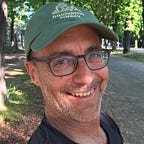Project>Mono
The first time …
My first glimpse of Mono Lake came in May of 1983. I was speeding west on Highway 167, an old-school, arrow-straight Great Basin road that rides the ripples of the bony high desert landscape. The bright disk of the saline sea shining purple under a fat orange moon was jarring, since I was already feeling a little hallucinatory after 15 hours of driving.
It was almost too much to take in — vast chalky salt flats, gnarled rock towers clumped along the shore, and the jagged Sierra Nevada crest to the west, scratching high into the star-filled sky. A Jim Croce tape, stuck in the van’s cassette player for a week, was playing: “Like the pine trees lining the winding road, I got a name …”
I almost camped there among the fragrant junipers, but the high country was calling. Through the pre-internet skier grapevine I’d heard that it had been a big snow year in the California mountains, so I drove another hour to the base of Ellery Bowl, a glacial cirque just east of the Sierra Crest near the eastern boundary of Yosemite.
After a backcountry ski trek the next morning, I headed back down the canyon and noticed that the stream next to the highway flowed toward the lake. But as far as I could see, Mono had no outlet. Where does all that water go, I wondered …
A month later, I started a summer gig as an intern with the Mono Lake Committee, a grassroots group that had formed just a few years earlier to draw attention to the plight of the lake. The Los Angeles Department of Water and Power started diverting nearly all the fresh tributary water from the Mono Basin in 1941. The lake was dying, shrunk to half its size and twice as salty.
I quickly learned the ecosystem basics from Dave Gaines, founder of the Mono Lake Committee, and some of the other scientists working on its preservation. Mono Lake is one of the most ancient lakes in North America, at least 760,000 years old. Fresh water from the mountains flows in, millennia of evaporation have left behind an alkaline brew that‘s deadly for fish but nurtures huge quantities of plankton, tiny crustaceans called brine shrimp and swarms of aquatic flies.
That makes it a perfect feeding place for nesting and migratory birds, some of them en route from Arctic breeding grounds to South America. Some species double their body weight in a few days at Mono, then fly 3,000 miles nonstop.
This ecosystem stayed more or less in balance through extreme cyclical climate shifts like glacial advances and retreats, centuries-long droughts, and cool, wet times when giant sequoias grew in what is now sage scrubland.
It stayed in balance until engineers and land speculators in Southern California started shunting the Mono Basin’s freshwater streams into an aqueduct to slake the thirst of growing cities 200 miles away.
When I returned to the lake in October 2019 to report on the ongoing restoration work, it was also on a full moon night, this time by planning rather than coincidence. A lot has happened in the last 35 years.
In the Mono Basin, people are working every day to heal the damage caused by decades of reckless resource use. The work is far from over, but people are listening to each other and figuring out how to preserve the Mono Lake environment and provide water for lawns, bathtubs and toilets in Southern California at the same time.
If we want to avoid a catastrophic global ecosystem collapse, as per the warnings of climate and biodiversity researchers, we need a lot more projects like the restoration of the Mono Basin, sooner rather than later.
We can learn from the work that’s been done here on the lands and in the streams of this prehistoric landscape in the past couple of decades. One lesson that should already be clear is that it’s easier and cheaper to not break things in the first place, rather than trying to fix them after they fail.
Read more:
Project>Mono: Decay and renewal
- This reporting project is partly supported by the University of Colorado, Boulder, Center for Environmental Journalism Water Desk.
